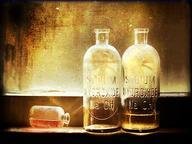Quiz Answer Key and Fun Facts
1. What is the most common chemical used to de-ice and provide anti-icing protection to aircraft?
2. What substance is usually added to de-icing fluid in order to dilute it to ensure maximum efficiency?
3. Airplanes may receive a de-icing or anti-icing treatment even if there is no precipitation at the airport.
4. In the Unites States, de-icing fluid has been standardized by SAE International. What did the initials SAE once stand for?
5. While there are several manufacturers of de-icing fluid, how many basic types are there according to SAE?
6. During extreme snowfall, how much time does an airport crew have to apply anti-ice fluid after de-icing an aircraft?
7. What is not a color used to identify de-icing or anti-icing fluid when it is sprayed on to aircraft?
8. After receiving anti-icing treatment, the aircraft will be protected until the fluid is washed off.
9. At what temperature will anti-icing fluid no longer be effective?
10. Is inhaling fumes from the de-icing / anti-icing fluid harmful to passengers?
Source: Author
RedHook13
This quiz was reviewed by FunTrivia editor
rossian before going online.
Any errors found in FunTrivia content are routinely corrected through our feedback system.
